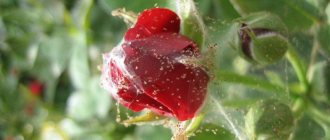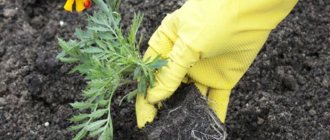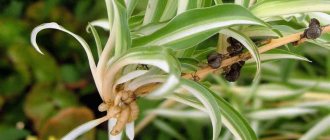Although diseases on marigolds are rare, their typical symptoms and methods of effective treatment are well known. The main thing is to carefully inspect the plantings regularly so as not to waste time.
Marigolds in bloom
Why do marigold leaves turn red?
Red foliage is not always pretty. There are several reasons for this fairly common phenomenon, characteristic of all varieties of marigolds:
- The weather is too cold. The plant should be green, but it is red due to its inability to produce chlorophyll.
- Plants are exposed to the scorching sun all day long.
- If the soil is too acidic, then a red and sometimes even purple color appears at the ends of the leaves.
You won't be able to influence the weather, so only two other reasons can be corrected. The bushes can be carefully dug up and transplanted to a more suitable place, and wood ash can be introduced into the acidic soil when loosening.
Why marigolds don’t bloom, what to do
These flowers are considered unsurpassed in the abundance of flowering: the forcing of buds from 2 months of age occurs continuously until frost. The absence of buds is a rare phenomenon, the reasons for which are:
- Drought. In the absence of rain and watering, plants may die.
- The plant is affected by spider mites. The pest sucks out the juices, which seriously inhibits the growth and flowering of marigolds. It is necessary to spray the flowerbed with acaricide.
- The landing site is too dark. Lack of sun is a serious obstacle to flowering. Chernobriv residents need at least 6 hours of bright light per day.
Typical picture: lack of power, light and watering
Marigold leaves have turned white
A very unattractive sight - whitish leaves, the edges of which dry out and curl. There are two reasons why marigold leaves turn white:
- Spider mite invasion. Urgent spraying with acaricides in 2 doses with an interval of 1 week is required.
- The crown is affected by powdery mildew. They are treated against it with systemic fungicides.
Marigold leaves curl
Slight curling of the tips of the leaves indicates that the plants are not getting enough light. It happens that seedlings are grown in insufficient light, and then immediately planted in a sunny place in open ground. The sun will quickly burn the tender leaves, they will curl, dry out and fall off. That is why seedlings must be hardened off in the afternoon.
Important! Curling leaves and massive wilting of buds are a sure sign of drought; you should urgently water the flowers.
In addition to these reasons, leaf curling is a sign of various diseases, including powdery mildew. Chlorosis also affects foliage.
How does marigold chlorosis manifest?
A plant disease caused by a severe lack of essential nutrients is called chlorosis. As a result, the most important life process – the formation of chlorophyll – is disrupted. For chlorosis in marigolds:
- the veins on the leaves remain green, but the plates themselves turn yellow;
- The tops of the plant dry out first, then the foliage becomes smaller and falls off;
- the buds become smaller and dry out;
- the root system stops developing.
Treatment consists of enriching the soil with the microelement that is lacking. Since it is quite difficult to carry out an accurate diagnosis, the best thing that can be done is to fertilize the planting with complex mineral fertilizer.
Characteristic manifestation of chlorosis
What is powdery mildew in marigolds (lat. Erysiphaceae)
The fungal disease manifests itself in the form of a clearly visible whitish coating on the leaves. It seems as if the plant is dusted with white dust. If you leave even one speck, then quite quickly the disease will cover the entire crown and spread to neighboring flowers, which still have time to grow. Treatment of powdery mildew involves systematic treatment of all plantings with fungicides containing sulfur (according to the manufacturer’s instructions).
Important! After spraying with sulfur-containing fungicides, subsequent treatments can only be performed after 2 weeks.
Gray rot (lat. Botrytis cinerea)
This fungal disease is favored by cool, damp weather. Thickened, poorly ventilated plantings suffer the most. First, the leaves darken, then brownish spots appear on them. This is the time when you can still save flowers by spraying. The fungus tends to spread to neighboring plants at a very high speed. It is best to remove and burn specimens where numerous stains have already appeared, and spray the remaining ones. The drugs “Fundazol”, “Alirin-B”, “Fitosporin-M” are suitable.
What kind of plant is this?
These magnificent flowers most likely owe their name to their velvety red-brown petals. Marigolds, otherwise known as tagetes, are an unpretentious annual fast-growing plant. Strongly branched but compact, the plant reaches a height of 20 to 100 cm. The flowers are simple or double, reaching 10 cm or more in diameter. The plant is very responsive to care and prefers fertile neutral loamy soil.
It is grown through seedlings or direct sowing in the ground. The plant is heat-loving, so it is planted in open ground after the return frosts have passed. It blooms for a long time, profusely, from May - June until autumn frosts. What the flower looks like - look at the photo.
The seeds do not germinate or germinate very rarely.
— Seeds may be to blame for this if they have expired
, and there is no germination at all, or they germinate very rarely. Be patient and have new fresh seeds, you will have to replant.
— Seed germination requires special conditions
: scarification (filing the seed coat), stratification (exposing the seeds to cold). Before planting the seeds, carefully read on the bag what conditions need to be created for the seeds to germinate: the seeds must be on the surface or germinate in greenhouse conditions, the seeds of some plants germinate only in the light or only in the dark.
Common diseases
The special aroma is formed due to the high content of phytoncides. Diseases and problems with the structure of the bush most often arise due to improper care.
Why don't they bloom?
The lack of color can be caused by an abundance of fertilizers and moisture (the bush devotes all its energy to the formation of green mass), drought, lack of air in the soil or lack of natural light.
How to diagnose the problem? The bush looks healthy, but there is no ovary on the stem. A distinctive feature of this problem is thick and fleshy leaves. What to do to activate flowering?
- Adding sun. The sun's rays will make the flowering lush and chic. Marigold seedlings should be planted in areas that receive moderate amounts of sunlight (scorching rays will cause the bush to gradually dry out). Natural light in the morning and evening activates flowering, and on a hot afternoon the bush can be covered with agrofibre, forming an artificial shadow.
- We monitor watering. When the first buds form, you need to reduce the number of waterings. Excessive moisture inhibits flowering and provokes putrefactive processes. It is advisable to water the bushes once every 2 days (the water should be warm).
- We apply fertilizers sparingly. It is allowed to feed the bush only when the stem is higher than 10 cm. Complex fertilizers must be applied before or after flowering. It is forbidden to use fresh and clean humus. A suitable option is a mixture of nitrogen and potassium, phosphorus and trace elements. For 10 liters of water add 2 tbsp. fertilizing and apply to the soil in the evening.
- We ensure air flow. The soil needs to be loosened and weeded after each watering. For the best effect, wet, loose soil should be covered with hay or sawdust - this will minimize the rapid evaporation of moisture.
The seedlings have stopped growing
— Often the reason for stunted growth lies in a lack or excess of nutrition, pests, lack or excess of moisture, and as a consequence of the onset of a disease: root rot, basal rot.
— Suberization of root tissues. In some cases, treating the soil with Maxim, Fitosporin, or Baikal-Em1 will help.
— Use of high-moor peat as an earthen mixture. Some sellers may say that this is ready-made soil and you can safely grow seedlings in it. High-moor peat is only suitable as a component of an earthen mixture. If you do not transplant seedlings from such soil in time, you can observe the following picture: the seedlings begin to grow together, but later the peat dries out, water does not stay in such soil at all, the seedlings suffocate and die. Place this dried lump in water and let the soil soak. Then transplant the seedlings into a new soil mixture.
Why is root rot dangerous and how to prevent it?
Young marigolds often suffer from blackleg, and adult plants from root rot. Stunted growth, yellowing leaves and wilting of the bush are a sure sign that root rot has appeared. The affected bush cannot be saved, but the disease can be prevented.
The main condition for the health of marigolds is proper care:
- the soil in which flowers are planted must be loose;
- watering should be regular, but not abundant, so that excess moisture does not provoke the development of the disease;
- it is necessary to ensure free access of air to the root system; for this, the soil is loosened;
- regular weeding and weed removal;
- You cannot add fresh manure to the soil in the flower bed;
- Plants cannot be replanted where sick Chernobrivts grew a year earlier.
Sick marigolds must be promptly removed from the flowerbed.
Marigolds are protectors
Despite the problems described above, in most cases, pests bypass marigolds. Only improper care leads to the fact that the flowers have to be saved.
If the disease is detected in a timely manner or pests are detected, the flowers can be saved. Therefore, when caring for them, inspect the marigolds, surround them with attention and care, and then they will grow healthy and strong. The sooner you start fighting pests, destroying caterpillars, and doing everything to ensure that aphids and slugs leave your flowerbed, the greater the chance that you will save your marigolds.
These flowers are reliable protection for flowerbeds and vegetable gardens. Cabbage, phlox, roses and many other plants next to Chernobrivtsy will grow healthy and beautiful, since the aroma of marigolds will scare away unexpected guests. The proud lily will be saved from the lily beetle, gladioli from nematodes and thrips, and flowering plants sprayed with marigold infusion will be saved from bedbugs and fleas.
Methods of administration
Only inflorescences are used for medicinal purposes.
You can only harvest open buds. Marigolds should be collected in late spring and early summer; it is during this period that they are abundant in nutrients. Dry flowers in the open air without exposure to direct sunlight (it is acceptable to use an electric dryer). They retain their value all winter.
Let's look at the most promising plant-based recipes.
Tincture
- 100 grams of dried inflorescences;
- 500 ml vodka.
- Place flowers at the bottom of a glass jar.
- Pour vodka. Seal the container hermetically.
- Leave for 2 weeks at room temperature (in any dark room).
- Strain and store in the refrigerator.
You should drink the medicine from marigolds 5-10 ml per day 30 minutes after meals. It is effective for colds and helminthic infestations. Sometimes the tincture is used to treat menopause and eliminate the symptoms of premenstrual syndrome. Duration of treatment – up to 1 month.
Decoction
- 3 Chernobrivtsev flowers;
- 400 ml water.
- Brew flowers with hot water.
- Cook over low heat for about 10-15 minutes. The composition must be stirred every 2-3 minutes.
- Strain.
The leaves of the seedlings became hard, changed color, spots appeared on the leaves, the growing point died
— Excess fertilizer
. The prepared soil already contains the fertilizers necessary for seed germination; you need to be very careful when applying fertilizers. Seedlings may become poisoned. If such a situation arises, washing the soil with a large amount of water will help, provided that the water should drain freely. Or replanting into new soil.
Sea sand was used as one of the components in the soil mixture
, the salts of which caused poisoning of the roots. In this case, you should change the soil and replant the remaining plants and wash the roots.
- Lack of moisture.
Main diseases and methods of their treatment
Marigolds are not too demanding to grow; they bloom for a long time from the first days of summer until frost. The reason for the popularity of flowers is their ease of care and minimal susceptibility to diseases and pests.
Due to their specific aroma, they are often planted in garden beds, as marigolds prevent diseases and pests of vegetable crops. But sometimes improper care or uncomfortable weather conditions provoke diseases in the flowers themselves. They should be remembered and prevented immediately when they first appear.
Blackleg
This is the most common problem with marigolds. It affects mainly young, immature plants. At the initial stage of the disease, the lower part of the stem is surrounded by a light coating, which gradually forms into white spots. After some time they turn brown and cause rotting.
In a short period the flower dies. In such a situation, it is better to remove the affected plants and burn them to avoid contamination of the soil. To prevent and prevent disease, seeds are treated with fungicides before sowing. The same procedure is carried out with the soil before planting.
Root rot
The disease appears on mature plants. In too wet summers, marigolds planted in open ground are susceptible to root rot. The bushes turn yellow, slow down, and subsequently wither and die. Infected plantings can no longer be saved.
Only proper care can preserve the health and appearance of the plant crop. To do this, the soil should be constantly loosened and watered regularly, but not too much. Weeding and removing weeds will not hurt.
Insect pests
Spider mite
Of the insect pests, the spider mite most often annoys Chernobrivs. As a rule, spider mites appear on young plants - on seedlings, sprouts that are grown in greenhouses or indoors. Although, if the summer turns out to be dry and hot, spider mites may also take a liking to mature plants. The leaves of plants that the tick eats first begin to acquire a whitish tint and then begin to dry out. A thick coating appears on the leaves, which is left by the mite.
The main measure to combat this pest is to frequently spray marigolds with clean water - spider mites cannot tolerate high humidity.
Increase the number of waterings by generously watering your flowers with a spray stream from a hose. Bathe your marigolds with water as often as possible. Also, plants that spider mites eat can be treated with a tobacco solution. You should take 200 gr. shag or snuff, pour 3 liters of warm water and leave for two days. Then the infusion is filtered, topped up with clean water to 10 liters, and 50 grams are added. grated laundry soap and mix well. The infusion should be used immediately - the plants are sprayed generously early in the morning or in the evening until the spider mites disappear. This solution cannot be stored for a long time, as it loses its properties. Try to prepare a new infusion of tobacco each time.
Please note that ticks really do not like the smell of tansy. Although tansy is usually removed as a weed from vegetable gardens and disposed of in gardens, the benefits of this plant are invaluable. There will be no mites on marigolds if you plant them next to tansy. There are also beautifully flowering plants that insects do not favor, and one of them is petunia. Plant marigolds next to petunias, and you will not only create a beautiful flower bed, but also make caring for the plants easier.
Thrips
These small insects are sometimes difficult to notice, but they can be recognized by the pollen that falls from the stamens and browned anthers. The flowers quickly fade, the petals and leaves become covered with small white and black specks. Over time, the leaves acquire a silvery-white color and then darken.
Control measures and prevention
Promptly destroy weeds and plant debris from the site. If there are too many insects, it is better to uproot the plants. In other cases, they are treated with Fitoverm, Akarin, Aktara, Confidor.
Causes of wilting
There are several factors that lead to wilting.
- Light. The leaves dry out depending on how the sun's rays fall on the plant. Direct rays may cause burns. If the gardener, when growing marigold seedlings, limited and hid them from the sun, then after planting in open ground, the leaves dry out from an excess of sunlight.
- Water. Drying of marigolds is a process that may indicate that the plant is not receiving enough liquid. Marigolds require daily watering for intensive growth and lush flowering. At the same time, it is important to prevent moisture stagnation, since dangerous fungus quickly appears in such an environment.
- Place of sowing. When planting flowers, many gardeners limit the space between the bushes. Due to this restriction, the buds and leaves of the plant begin to wither and dry out. When planting marigolds, there is no need to separate the holes and take away free space from the plant.
Marigold diseases - why leaves dry out
Marigolds (tagetes) are the inhabitants of every garden. They are found in city flower beds, pleasing the eyes of passers-by. Filling the air with an unsurpassed aroma, they flaunt on the balconies of city apartments. These flowers are completely unpretentious to grow. However, gardeners have a lot of questions if the bushes for some reason turn blue, red or purple. Many people are not entirely clear what to do when these plants are attacked by pests. So that the disease does not take you by surprise, and measures to eliminate it are taken in a timely manner, you need to know the main diseases of marigolds, as well as those insects that harm these flowers.
Making a diagnosis
| Problem | Description and symptoms |
| Blackleg | A common disease. The process by which the lower part of the stem darkens and begins to rot. |
| Root rot | In an adult plant, the leaves turn yellow and the buds fade. |
| Viral diseases |
|
| Spider mite | Appears in dry soil in which marigolds grow. The risk of infection increases in enclosed spaces (greenhouses, houses). The insect feeds on leaves. Symptoms of infection are thin cobwebs, light spots and yellowing of the leaves. |
| Slugs and snails | The diet of pests is leaves, flowers, stems. Infection is indicated by a silvery trace of dried mucus on the leaves and specific damage to the bush. |
| Aphid | Tiny insects that eat the buds. A symptom of infection is small holes in the green mass. The pest also covers the leaf blade with a viscous liquid - honeydew. Large colonies can destroy a bush in a short period of time. |
| Caterpillars | A sign of a parasite attack is leaves chewed on the sides and in the center. Curled leaves indicate that caterpillars have laid larvae in them. |
Why do parts of the plant dry out and the buds turn black?
If a flower stops growing, becomes lethargic, its leaves begin to dry out, and its stem or bud turns black, these are symptoms of a bacterial infection. The main reason is excessive watering. Marigolds love water, but soil that is too wet is much worse for them than soil that is too dry.
Excessive amounts of fertilizer and compacted soil also provoke infection. Bacterial damage occurs in the form of:
- bacterial rot;
- bacterial spotting and burns;
- vascular bacteriosis.
What to do?
General actions for any problem are preliminary help to the plant. All damaged or heavily infected parts must be removed using scissors or pruning shears. The plant should be left without watering for 2-3 days to allow the soil to dry out. Be sure to set a watering schedule and normalize the moisture balance.
Further actions depend on the diagnosis.
| Diagnosis | What to do? |
| Blackleg |
If the disease appears on marigold seedlings, it must be destroyed. |
| Root rot | Only spraying with chemicals will help: Traditional methods of control are watering the soil with a solution of potassium permanganate, covering the damaged part of the root with crushed chalk or ash. |
| Bacterial infection | Replant the plant and water it with a bactericidal fungicide:
Disinfect garden tools. Prevention - spraying marigolds with biobactericides (Fitolavin, Fitosporin). |
| Pest attack |
|
You can get rid of slugs by scattering small planks, pieces of apple or potatoes near the flower at night. In the morning, the gardener will have to collect these elements and the pests stuck in them. Prevention of infection - mustard powder or ash scattered around the marigolds.











